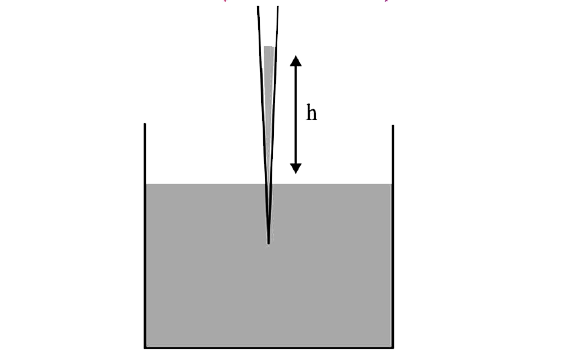A glass capillary tube is of the shape of a truncated cone with an apex angle `alpha` so that its two ends have cross sections of different radii. When dipped in water vertically, water rises in it to a high h, where the radius of its cross section is b. If the surface tension of water is S, its density if `rho`, and its contact angle with glass is `theta`, the value of h will be (g is the acceleration due to gravity)

A. `(2s)/(brhog) cos(theta-alpha)`
B. `(2s)/(brhor) cos(theta +alpha)`
C. `(2s)/(brhor) cos(theta +alpha//2)`
D. `(2s)/(brhor) cos(theta + alpha //2)`